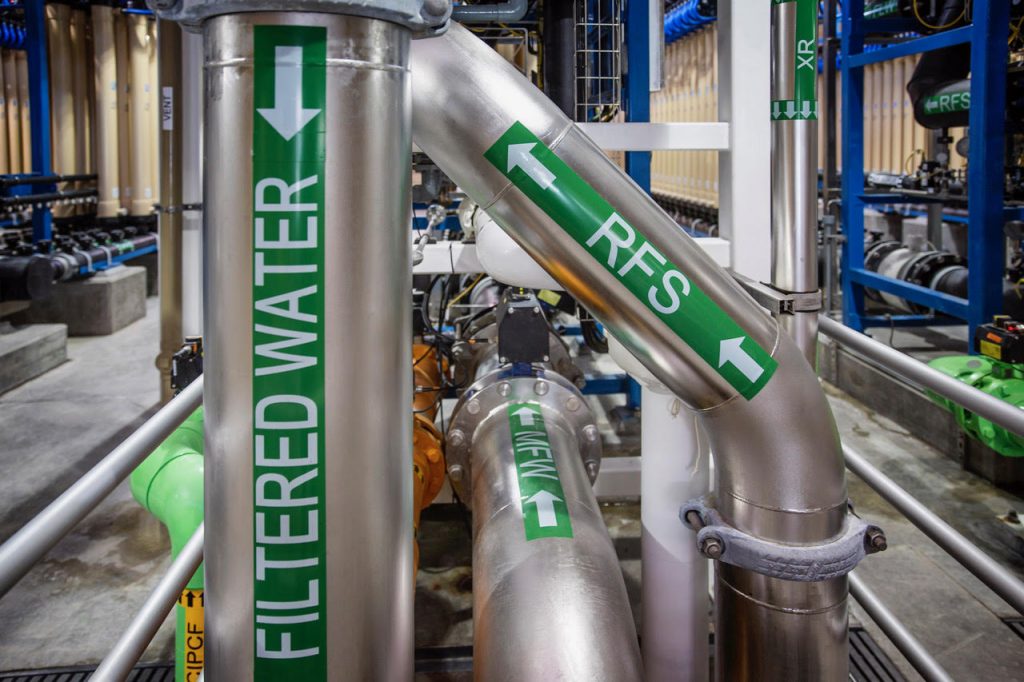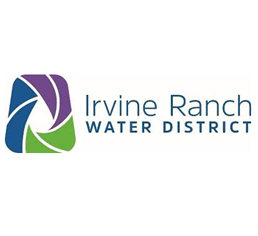Each year, Water UCI works with a cohort of regional water agencies to identify the most pressing water supply, water quality and water management challenges in the region and in the country. The group outlines a yearly research agenda and scope of work often engaging additional partners. Faculty from departments across the campus partner with the center to conduct research and help find solutions to challenges with global impacts. The Industry Advisory Board of the center consists of four water agencies in Orange County each with a number of facilities that include drinking water, wastewater, recycled water and advanced-treated potable reuse treatment plants as well as various natural treatment systems which are often utilized in conducting the research.
Established in 1961 as a California Water District under the provisions of the state of California Water Code, Irvine Ranch Water District (IRWD) is an independent special district serving Central Orange County, California. IRWD provides high-quality drinking water, reliable sewage collection and treatment, droughtproof recycled water, and environmentally sound urban runoff treatment for approximately 422,000 residents in central Orange County, California. IRWD encompasses 181 square miles extending from the Pacific Coast to the foothills and serving Irvine and portions of Costa Mesa, Lake Forest, Newport Beach, Orange, Tustin and unincorporated areas of Orange County.
Moulton Niguel Water District delivers high-quality drinking water, recycled water and wastewater services to more than 170,000 customers in Laguna Niguel, Aliso Viejo, Mission Viejo, Laguna Hills, Dana Point, and San Juan Capistrano. A leader in conservation and environmental protection, Moulton Niguel maintains the lowest average water bill in South Orange County. They strive to keep customers informed of the latest statewide, regional, and local water updates, as well as educating customers regarding water efficiency programs and resources.
The Orange County Water District (OCWD; the District) takes the limited water supply found in nature and supplements it to provide water for 2.5 million people in north and central Orange County, Calif. Since 1933, when the California State Legislature formed it, OCWD has been entrusted to guard the region’s groundwater basin, which supplies up to 77% of the water supply for 19 cities and water agencies. OCWD manages and replenishes the basin, ensures water reliability and quality, prevents seawater intrusion, and protects Orange County’s rights to Santa Ana River water. The District also operates the world’s largest potable reuse facility, the Groundwater Replenishment System, which purifies treated wastewater to drinking water standards.
Santa Margarita Water District provides drinking water, wastewater, and recycled water services to over 170,000 residents in south Orange County. The District is home to California’s first recycled water swimming lake, Lake Mission Viejo, and the region’s largest recycled water reservoir, Trampas Canyon Dam and Reservoir. An elected five-member Board of Directors helps lead the District towards local, reliable, and sustainable water supplies for the region. Learn more about Santa Margarita Water District at smwd.com or facebook.com/SMWDnews.
2023 Research Project: PFAS Source Tracking in Sewersheds
Per- and polyfluoroalkyl substances (PFAS) are synthetic chemicals that have been widely used in consumer and industrial products since the 1940s due to their hydro/oleo-phobicity. Some of the PFAS ingested via these products is eliminated though urine and feces, which introduce PFAS into the municipal wastewater stream. PFAS may also be released into raw wastewater from textiles during laundering, and from use of PFAS- containing personal care products. Although a few studies have quantified the PFAS content of a few consumer products, the actual contribution of households to the load of PFAS in raw wastewater is currently unknown. In addition to residences, commercial (such as dry cleaning and laundromats) and industrial users of the sewerage system may also contribute PFAS to the influent of a wastewater treatment plant (WWTP). The amount of PFAS, and the major products or processes leading to high release of PFAS, from commercial and industrial operations into raw wastewater are not currently known. Upstream and downstream strategies to decrease PFAS concentrations in the wastewater stream require an understanding of the PFAS flux originating from different users of the sewerage system.




